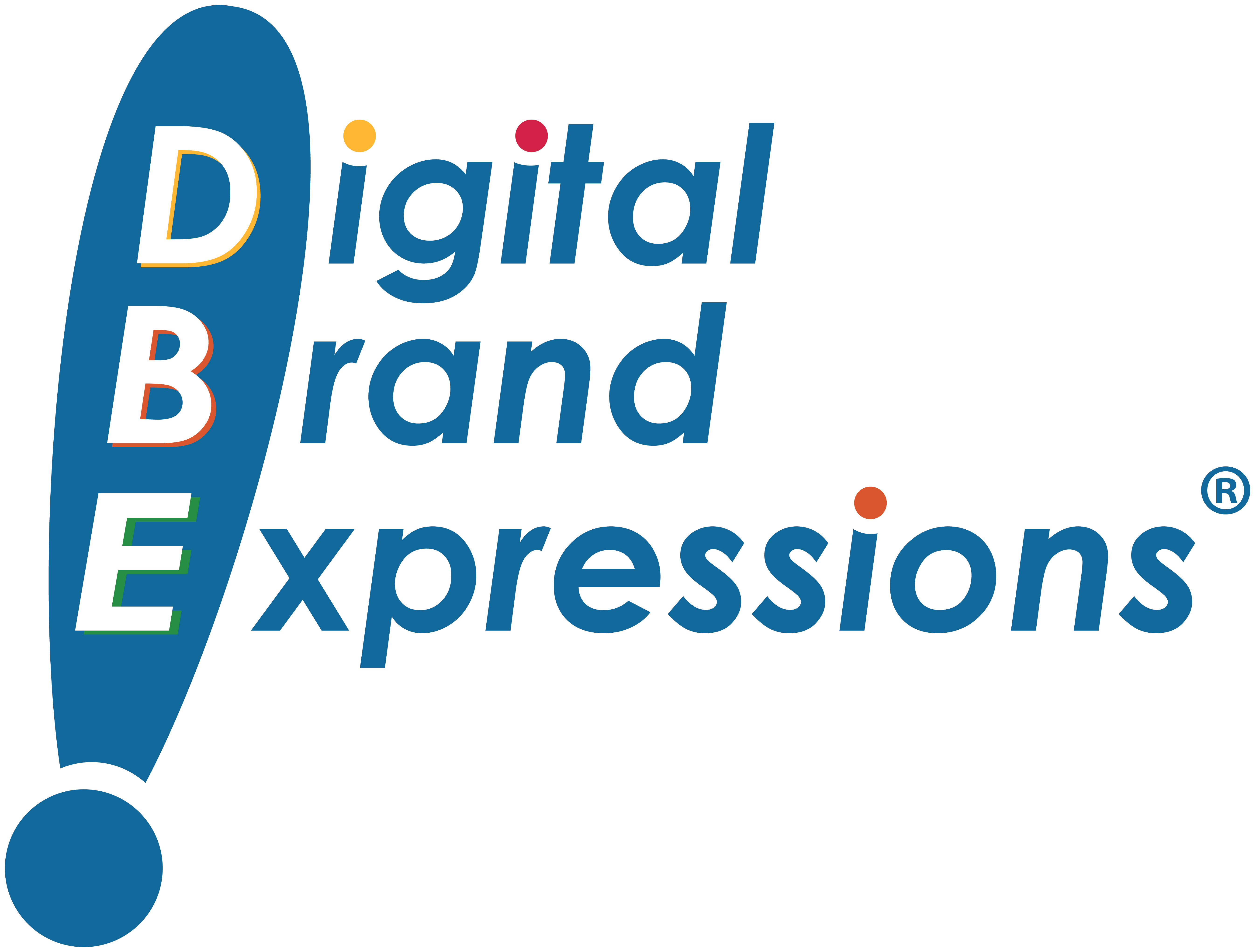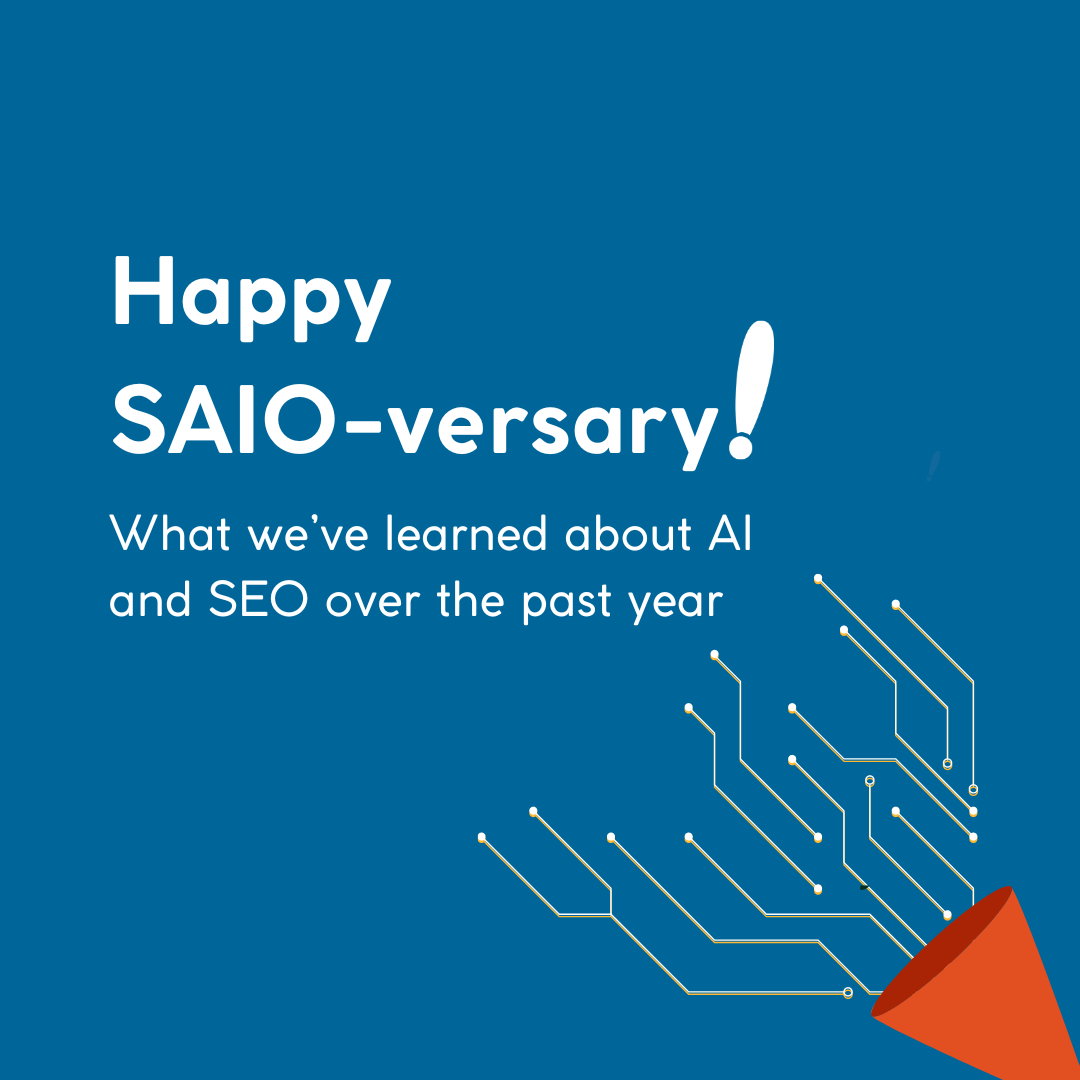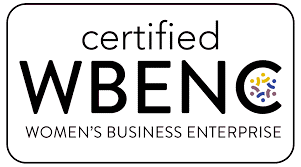Has it only been a year since we launched our Search AI Optimization (SAIO) strategy as a complement to our proven SEO practice? Let’s take a look back at what has ch-ai-nged, then look ahead with us.
The SAIO acronym then and now:
We settled on the SAIO name after researching a variety of acronyms because a) no one else was talking about it and b) the inclusion of “Search” at the start of the name most closely aligned with SEO while providing for the critical distinctions between the two.
Since then, we’ve seen a few alternative acronyms pop up including AIO for AI Optimization (pretty close to SAIO don’t you think?) and GEO for Generative Engine Optimization (the AI aspect is inferred). Regardless of the acronym being used, it is surprising to hear from clients and prospects that, even after a year, no one else is talking about doing SAIO/AIO/GEO as a complementary strategy to SEO the way we are. So, SAIO is still the acronym of choice for DBE.
The Gen AI search chatbots then and now:
When we first started beta testing the new Gen AI chatbots a year ago for generating link citations, authority signals, and clicks to client websites, the AI playing field was narrower. Now, opportunities for AI citations abound.
ChatGPT: generated a lot of buzz early, but the basic version was trained on available data up to 2022 and did not provide access to the internet so the AI response didn’t have link citations. We kept an eye on it and were beta-testers for the ChatGPT+ paid version that could surf the net and provide citations. ChatGPT+ and subsequent ChatGPT versions are now SAIO targets. There is now also a SearchGPT model in development. FYI, ChatGPT+ has over 3.9 million paying customers.
Google: was testing Search Generative Experience (SGE) and separately Bard. Bard morphed into Gemini. Then SGE finally launched as AI Overviews in May. Testing showed SGE AI responses were appearing on search results pages upwards of 76% of the time. But when AI Overviews launched the appearance of an AI response on search results pages dropped to 12%. AI Overviews is still evolving and the expectation is that it will eventually become more prevalent on Google SERPs. Still, for the time being, 12% of 8.5 billion daily searches is over 1 billion opportunities for AI Overviews citations.
Microsoft/Bing: was faster to market than Google with its Bing Chat AI chatbot (launched in partnership with Open AI), then renamed Bing Copilot. Copilot has been integrated into other Microsoft products like the Bing Edge browser and Skype. It should come as no surprise that over 100 million people use Bing Copilot every day. Bing is also testing a generative search experience that shows a Copilot AI response and traditional search results side by side. When this launches, it will be an opportunity for both SAIO and SEO visibility on the same page.
Perplexity: came onto the scene as a Gen AI chatbot designed to provide a different search experience. It leveraged a conversational prompt approach to help infer the intent of the searcher. Perplexity’s page layout puts its citations right at the top of the page as a way to validate its response. Their audience is smaller than the others, but 10 million active users per month still make it a valuable SAIO target.
SAIO Best Practices, then and now:
Technical: Beyond what we traditionally do for SEO, our testing of schema mark-up proved to be successful in helping train Gen AI chatbots on website content sets. That led to our practice of incorporating other forms of structured data as well to help the AI chatbots parse content and pull relevant citations.
Content: We launched SAIO last year with an FAQ blog that presented relevant content to questions in a concise yet conversationally factual style. The FAQ blog was quickly picked up and cited by Bing Copilot and Google’s SGE for searches on “SEO and SAIO”. We then created an infographic supporting the comparison between SEO and SAIO best practices and transformed the blog into a YouTube video. And we started promoting all these content variations via social media, particularly LinkedIn. We learned that LinkedIn and YouTube were considered reliable sources for content by the Gen AI chatbots and were pleased to see them appear as citations in addition to our website.
Links/Social Signals: The inclusion of chatbot citations from social media sources like LinkedIn and YouTube reinforces the value of including this strategy as a SAIO best practice. In a twist from the SEO tactic of generating inbound links to your website, we also see the use of outbound link citations in website content can reinforce the authority and credibility for SAIO citations.
SEO and SAIO moving forward together:
As we have seen with SEO over the past 20 years, we watched SAIO evolve quickly over its first year. We have seen the distinctions between traditional search engines and Gen AI “search” chatbots narrow in terms of their shared desire to provide users with relevant, useful answers to their queries.
We are proud to have correctly forecasted the emergence of SAIO and its convergence with SEO. As both practices continue to evolve, we are committed to being a vanguard for bringing increased search visibility to our clients regardless of platform.


